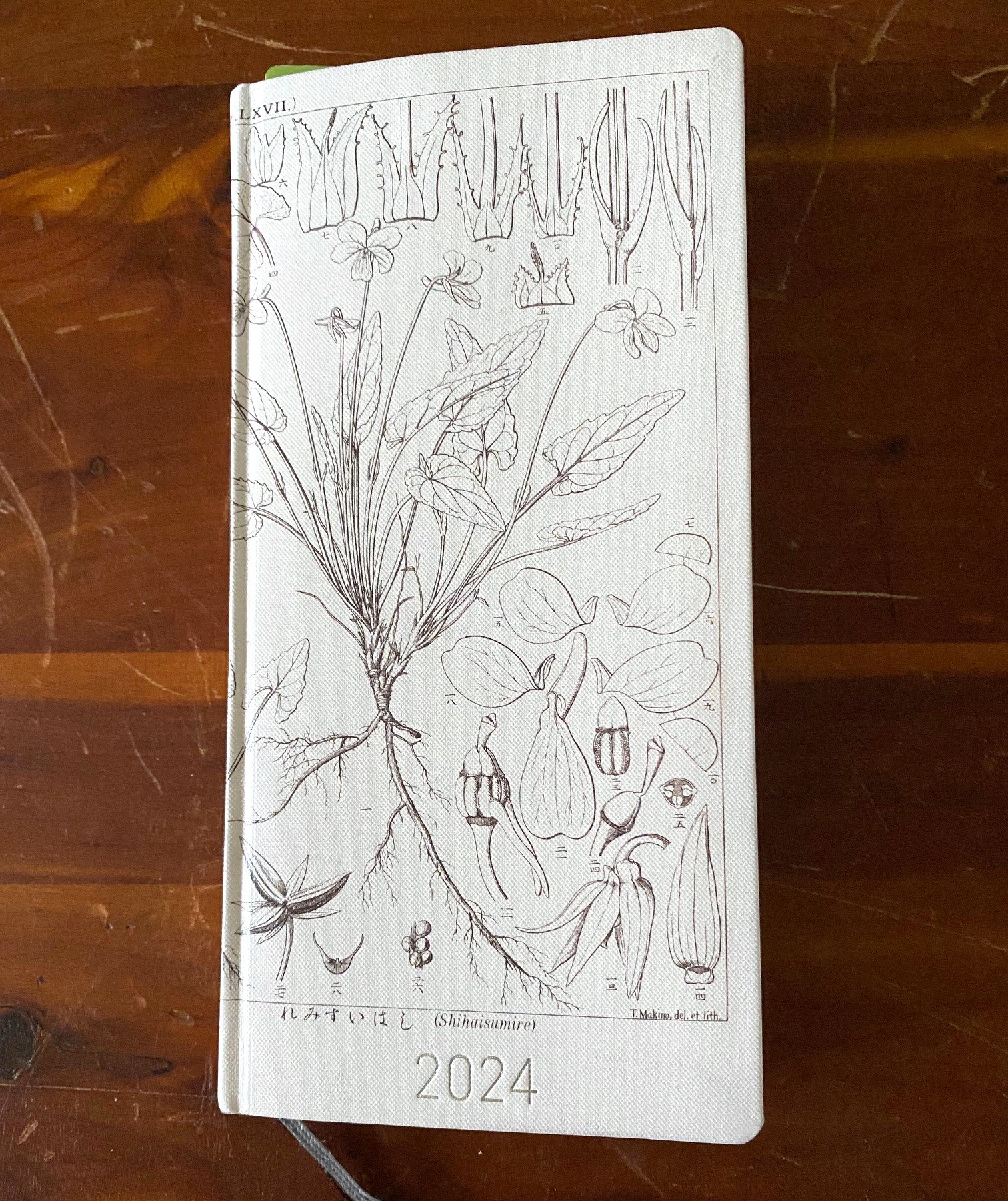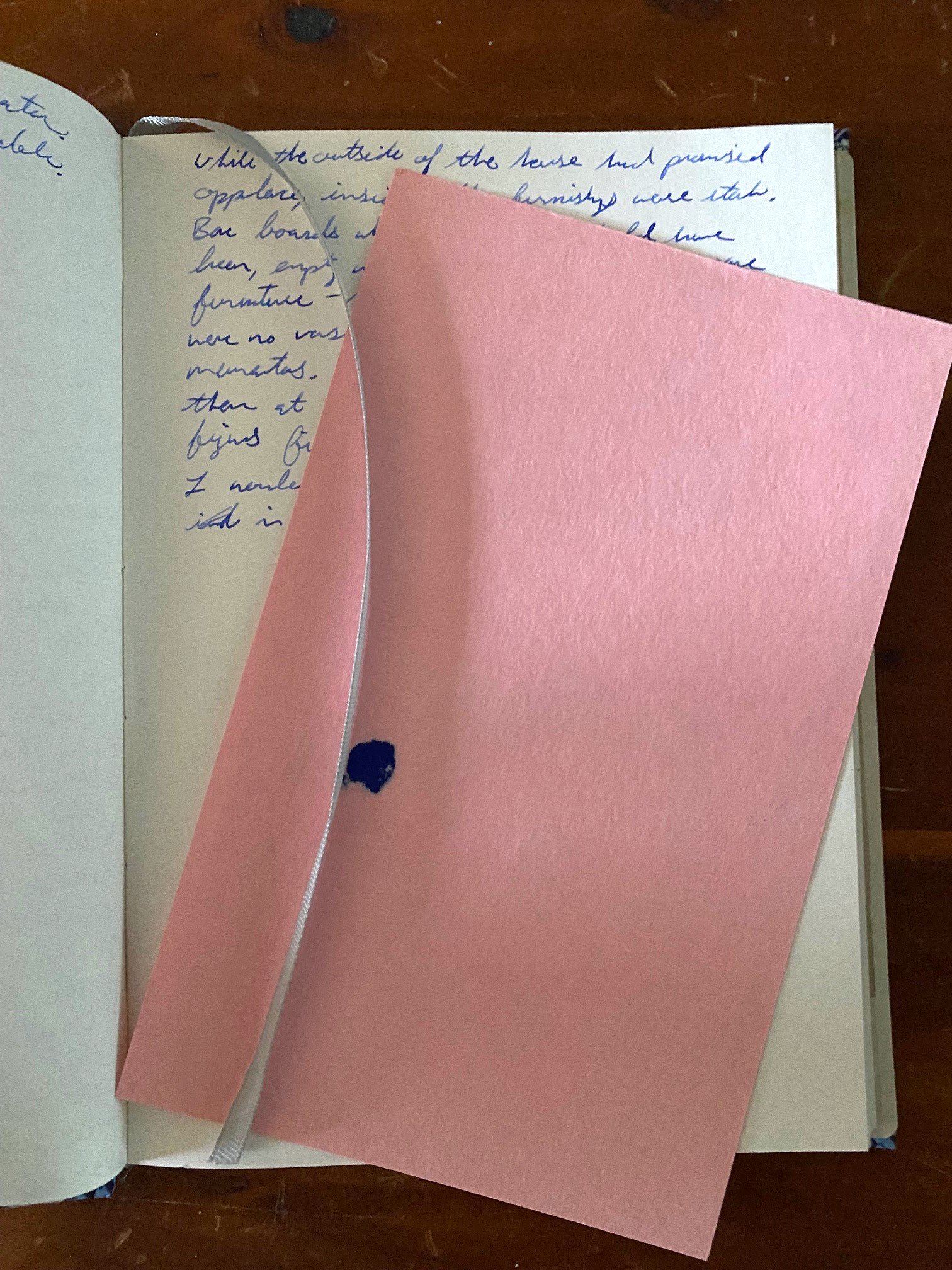(Sarah Read is an author, editor, yarn artist, and pen/paper/ink addict. You can find more about her at her website and on Twitter. And her latest book, Root Rot, is now available for pre-order!)
The Public Library Association's conference was held in Columbus, Ohio last week and it was immediately followed, for me, by a Horror Writers Association Wisconsin Chapter writing retreat near Milwaukee. That meant packing stationery for educational, professional, and recreational purposes! It also meant stopping in to a Columbus stationery store, On Paper, which was conveniently/dangerously close to my hotel.
For the conference:
My main stationery for notetaking at the conference was my Plotter Bible size with a CW&T Pen Type B in Brass. These weren't tools specifically chosen for the conference; they're my everyday carry writing tools that are never out of reach. They weren't perfect for the job. I could have used a gel pen to write more quickly and a larger page to expand my notes, but these were handy and portable--which were essential features for running around a massive conference.
Columbus was awesome. I got to explore a new city, reconnect with some local friends, and hang out with roughly 7,000 colleagues who were doing brilliant and amazing things. I visited two bookstores, Prologue Books and The Book Loft. Both were lovely, but I think I could live at the Book Loft. You know a bookstore is good when you're at a conference where publishers are literally throwing free books at you, but you still end up buying two books. Oops? No regrets. Okay, one regret. I regret not buying some of the cool t-shirts, too.
One highlight of Columbus is, of course, the stationery shop. On Paper is located right on the High Street, with lots of fun boutiques and coffee shops and restaurants nearby. The shop's interior is quaint and tidy, with antique furniture for displays and a fun assortment of cards, papers, notebooks, wax seals, bottled inks, and desk accessories. They had some lovely Retro 51 pens and some Kaweco fountain pens, but the majority of the focus was paper. They are my people. The vibe reminded me a lot of Papier Plume in New Orleans, minus the gothic flair of its distant cousin.
While I exercised an immense amount of self-control, I could not resist the "Hexes and Vexes" list pad from Open Sea Design Co. I mean. Who could? It was also the perfect opportunity to pick myself up a postcard souvenir. And I would like praise for resisting the recycled book cover journals, please and thank you.
If you're a PenAddict and find yourself in Columbus, I definitely recommend visiting On Paper for your stationery souvenir fix.
For the writing retreat:
I used my current story draft notebook, the Pebble Stationery Liberty Fabric notebook with Cosmo Air Light paper. For the pen, I used the Visconti Mirage Mythos, which I'm reviewing for next week's post. They were a great team, and between the lovely tools, the restful setting, and the quiet of the retreat center (and probably also the unlimited coffee and muffins of the retreat center), I knocked out about six thousand words of the best stuff I've written this year so far. Magic. The llamas also helped.
The two settings could not have been more different. A bustling city with far too much to do, oceans of people, and countless distractions--to a remote farm with a monastic room, an abundance of silence, and only a few other quiet writers. Okay, there was also a quilting retreat happening there, and they were... boisterous. But there were plenty of quiet corners to hide in, away from all humans. Which was exactly what I needed between a week of work travel and a week of solo parenting while my spouse travels.
April has been wild so far. Thank goodness for the writing tools that keep it all on track. Tomorrow I'm taking the day off just to write. Well, and taxi the kids around and pick my spouse up from the airport, but between those things...WRITING. I have goals, lists, deadlines, and empty pages to fill.
Enjoy reading The Pen Addict? Then consider becoming a member to receive additional weekly content, giveaways, and discounts in The Pen Addict shop. Plus, you support me and the site directly, for which I am very grateful.
Membership starts at just $5/month, with a discounted annual option available. To find out more about membership click here and join us!






























